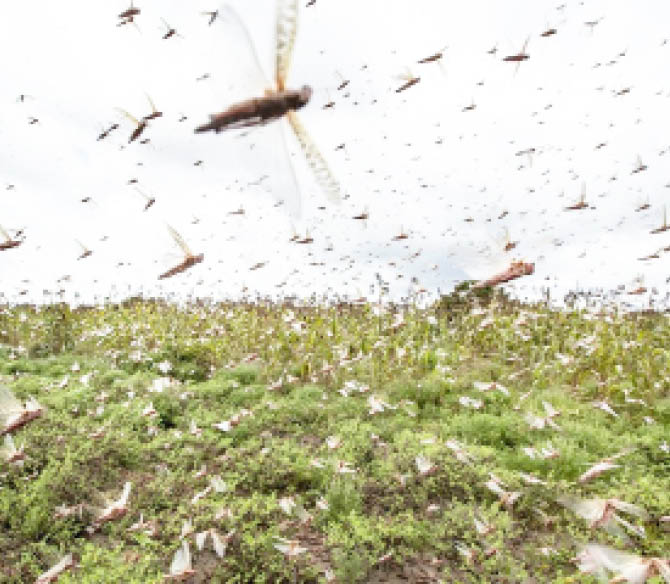AGRO SOLUTIONS
What are locust swarms all about? I heard about the warning against locust by the Food and Agricultural Organisation (FAO). Mutum Shehu, a large-scale rice farmer in Bidam Niger State Facts about locust swarms They can fly long distances Locusts can travel 81 miles in one day, and have been known to fly across the […]

Migratin locust swarms
What are locust swarms all about? I heard about the warning against locust by the Food and Agricultural Organisation (FAO).
Mutum Shehu, a large-scale rice farmer in Bidam Niger State
Facts about locust swarms
They can fly long distances
Locusts can travel 81 miles in one day, and have been known to fly across the Red Sea in one trip. A swarm of locusts actually flew from northwest Africa, all the way to Great Britain in 1954, and also from West Africa to the Caribbean in 1988, in just 10 days.
They can quickly multiply
Keith Cressman, FAO’s senior locust forecasting officer, said that despite unfavourable conditions, such as those that appear to be around right now, locusts could reproduce rapidly; they grow exponentially in numbers. If this happens, Cressman fears the population could multiply to be 400 times its original size by this summer.
Locusts live for a few months at a time, but they can also breed rapidly. It can take a locust two to four months to mature into an adult, but this can also happen in as little as three weeks.
They go beyond Africa
The Horn of Africa seems to be where the swarms first hit. Reports indicate the locusts flew across the Gulf of Aden to Somalia and Ethiopia in 2019. The bugs are now spreading elsewhere. Uganda, Tanzania, South Sudan, Yemen and Kenya have all been battling locusts recently, just as countries in the Persian Gulf. These include Kuwait, Iran, Bahrain and Qatar. India and Pakistan are also dealing with the plague.
Conflict is preventing getting rid of them
Experts in the field said the only fast and effective way to get rid of the current locust plagues was to spray the land and crops with pesticides.
Reports indicate that some countries being attacked are presently doing this. In places such as Somalia and Yemen, however, the efforts to do this have been squelched by the conflict present in the areas. It is not safe for planes to fly and spray, and this is creating a toxic situation that could cause famine.
With increased numbers, the insects switch to a completely new lifestyle. This is called the “gregarious phase.”
When locusts hit this phase some impressive changes take place. The desert locust changes colour from green to yellow and black, or to just yellow. Their brain also grows larger and the insects develop a larger capacity for endurance. This allows the locusts to migrate long distances, and to target crops and vegetation en masse, creating the perfect storm for insect plagues.
Locusts can live alone or in group
You do not hear of attacking locust swarms each year; and there is a reason for this. Weather conditions must be favourable in order for locusts to take over. Many things happen when the weather is right. Locusts can live on their own, and when they do, they behave like a solitary grasshopper.
When the weather becomes dry, however, locusts tend to congregate in groups, wherever there is enough vegetation left for them to eat. If this happens, many changes take place for both locusts and humans alike.
Locust can decimate livelihoods
Locusts can swarm in huge clouds of thousands of insects. When they do, these pests can devour crops like nothing you have ever seen. It can be difficult to imagine why nature invented them as it did, but there must have been a time in history when there was simply too much vegetation around, and having mass amounts of hungry locusts around was the answer to the problem.
Cressman said enormous swarms of locusts could eat the same amount of food in one day as everyone in New York and California combined.
Scientists in India claim that even a modest locust swarm can eat as much food as 35,000 people and travel an impressive 200 km in one day.
Because of these realities, locusts in large numbers are able to eat farmers’ crops quickly, leaving little for helpless humans to harvest, live on and sell.
The abridged piece by Victoria Simpson appeared in WorldAtlas.com
